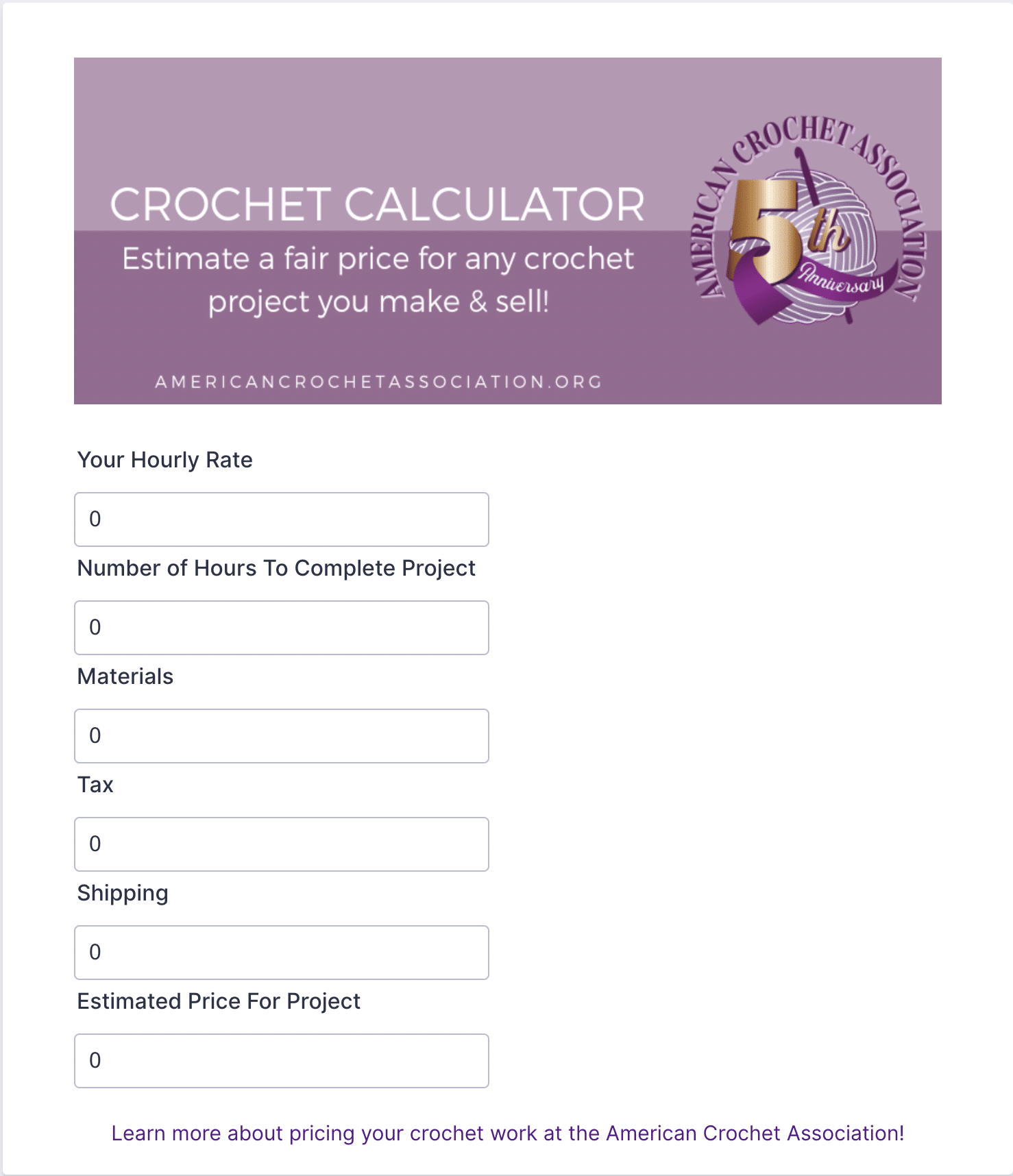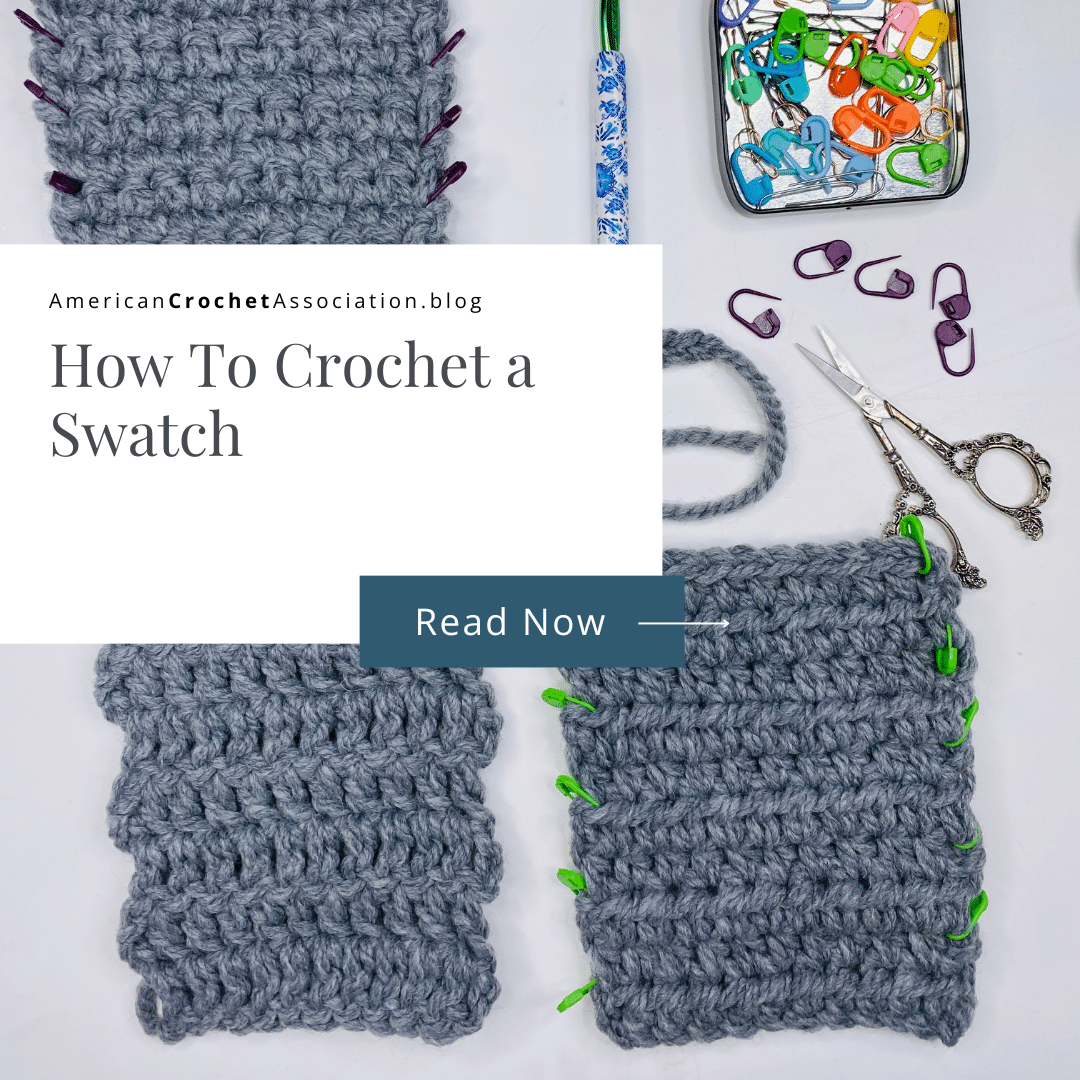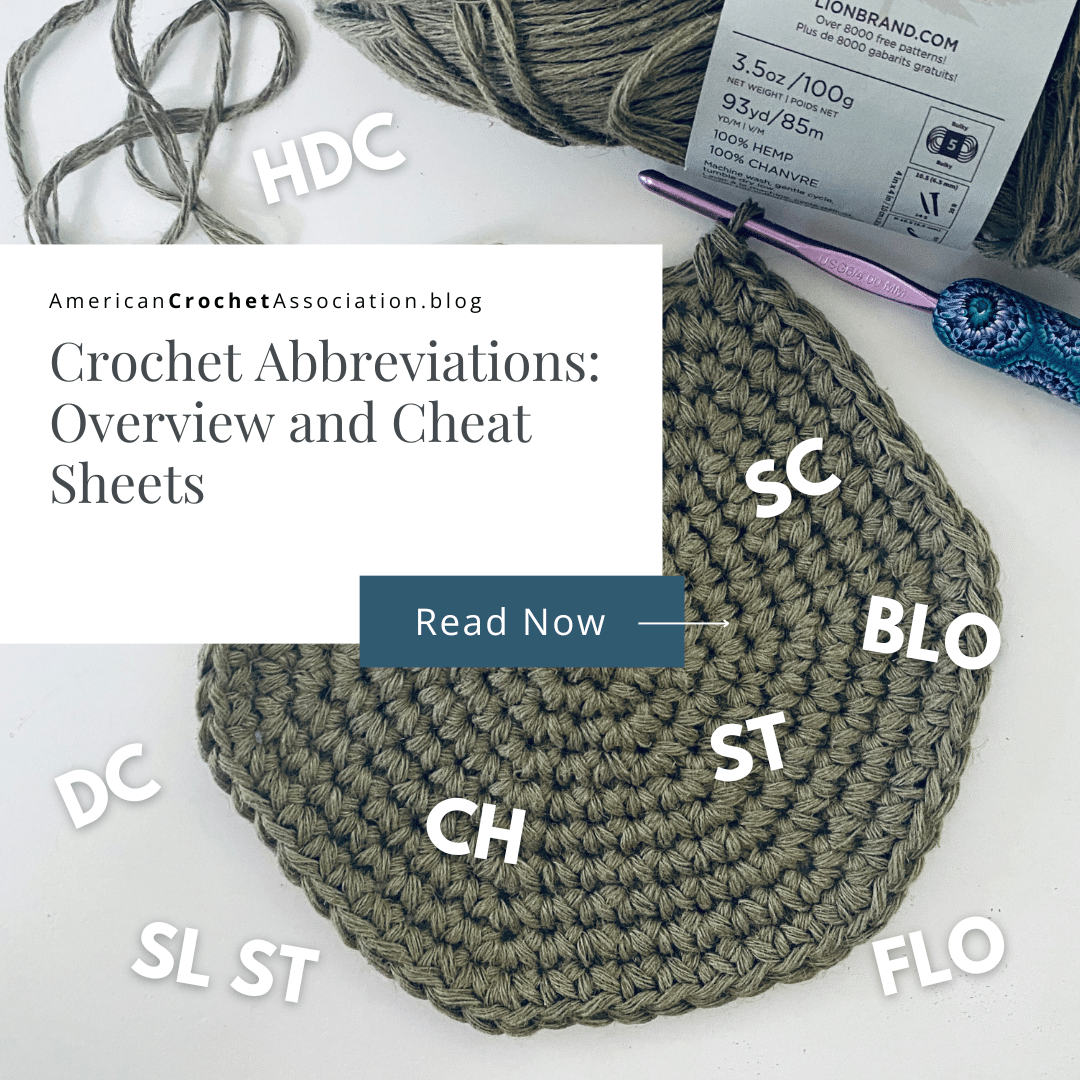If you love crochet, I’m sure you’ve given this some thought: Should I turn my crochet hobby into a crochet job?
Who wouldn’t want to get paid to do something they love, am I right?
When people want to buy your hard work it can be the best feeling in the world.
However, as good as it fee to sell a few things you made, the idea of turning your crochet hobby into a crochet business can be a bit frightening.
A crochet business is much more complicated than simply creating a page on social media and posting a few pictures.
Turning your hobby into a job would be a dream, but you may have a whole lot of questions:
- How should I price my work to actually earn money?
- What should I sell that people will buy?
- What if people don’t like my work?
- What can I do to avoid feeling burnt out making the same things for other people over and over again?
These questions are fair, and most crocheters are afraid to turn their hobby into a business because they just don’t have the right answers or a clear path to move forward.
Insert Salena with the American Crochet Association – I’m here to help.
After many years of working in the crochet world (teaching, writing, selling), I found practices and strategies that helped me become a successful professional.
Here’s everything I learned to make and sell what I love, avoid burnout, and earn a fair wage (and how you can do the same with confidence).
Table of contents
- How can I price crochet to earn a profit?
- Do you need to earn a set salary?
- How much time can you devote to crochet
- What is the minimum wage in your area
- Example: Product Price
- What Crochet Projects Should You Sell
- What if people don’t like my crochet?
- Deliver Outstanding Value
- Be Consistent
- To Sell Is To Serve
- How do I avoid crochet burnout?
- My Crochet Career
Estimated reading time: 11 minutes

How can I price crochet to earn a profit?
The real question you may be asking is: Can I really make money with crochet?
In my experience, yes!
You really can make money with crochet and build a career making and selling what you love.
When I first decided to sell my projects, I was clueless about how to price my work.
I loved to crochet, so making any money on a finished project was really exciting for me!
I charged $5 to $10 for hats, and $25 to $40 for blankets.
At those prices, I had a lot of customers.
However, I quickly realized that I was not really operating a sustainable business.
That was a hard lesson to live through, and it was months before I edged toward burnout and feeling like a failure.
The idea that helped me to build successful, and avoid burnout, was deciding that I needed to separate my hobby from my business.
First, let’s clearly define a crochet hobby from a crochet job (or business).
If you’re thinking about turning your hobby into a business, the first step is changing your mindset about crafting:
- When crochet is my hobby, I’m crafting just for the fun of it!
- When crochet is my business, the knowledge and skill I produce is worth a fair wage.
Both can be true at the same time.
It’s okay to charge a fair wage for the work you produce and still have time and love to crochet as a hobby.
How should you price your work to actually earn money?
There are three questions to ask yourself to help define your value and your personal fair wage.
Do you need to earn a set salary?
If you do, outline this as a financial goal.
For example, if you need to earn $500 per month, divide that by the weeks and days of each month that you are able to work, and make that your financial goal.
Wage Example:
$500 / 4 weeks = $125 / week
$125 / 5 days = $25 / day
You will have to earn $25 in net sales, 5 days a week, to meet your financial goal of $500 per month.
A business should outline financial goals, so be sure to define ones that work for you.
How much time can you devote to crochet
Whether you need a set income or not, you only have a limited amount of time per day, week, and month that you can crochet.
Crochet is taxing on the body; your eyes, neck, shoulders, arms, wrists, fingers, and back all take a lot of abuse with each stitch.
To sell crochet is to sell your time; your time is a valuable commodity in your life, so treat it as such.
Bottom line, be honest about how much time you can dedicate to crocheting as a career and allow down-time to rest.
Example:
Let’s say you can crochet 2 hours per day, 5 days per week, and you need to earn $500 per month.
You should charge at least $12.50 per hour for your time to meet your minimum financial goal.
If you’re not yet sure when and how much time you can devote to your crochet business, start by setting aside certain days and blocks of time to get started, then evaluate from there until you’re comfortable.
What is the minimum wage in your area
Every area has a minimum wage; the lowest amount you can be paid for your time, should you work in your community.
Let’s say minimum wage is $13.25 per hour in your community.
That means any job in your area will pay at least $13.25 per hour for your time and labor.
Why should your crochet time and labor be any less than the minimum wage in your area?
You wouldn’t work for less than minimum wage outside the home, even for a job you love, so why would your crochet business be any different?
Example: Product Price
Follow these steps to determine what you should charge:
- Define your hourly wage
- Charge for materials associated with every project
- Charge for shipping, handling, packaging, and any additional fees associated with every project
Example
Small Baby Blanket: $108.50
- Time / Wage: $10 per hour x 8 hours = $80
- Materials: Yarn = $20
- Ship / Handle / Package / Fee: Postage, transaction fees, and processing = $8.50
If you have sticker shock, and think nobody will pay that much for crochet, reconsider.
You can only crochet so many hours per day, per week, per month.
That precious time is valuable.
Remember, an hour spent crocheting can take a toll on your body: your hands, wrists, arms, shoulders, neck, back; this is your skill, and it’s laborious.
Your time spent on a project should be documented by the hour, and that is worth a fair wage.
Time is the only variable you cannot change in this business, so charge a living wage and document your time carefully.
To use our interactive crochet calculator, and crochet price worksheet to price all your crochet projects, check out this preview in our professional workshop: My Crochet Career – Crochet Price Calculator

If you’d like even more details about how to price any crochet project, check out this article on the subject: How To Price Crochet: 3 Simple Steps For Any Project
What Crochet Projects Should You Sell
what do people want to buy?
How should I decide what products to sell in my shop?
How do I find out what people want to buy?
These are truly great questions to keep in mind, and there are two approaches I like to consider when choosing which crochet items to make to sell:
Passionate Approach
Ask yourself: What do I enjoy making the most? What am I best at?
You may have a clear niche, like cute crochet hats for newborn photography, so perfecting this will help you to build a specific brand around your talents.
Here, you may not be following product trends, you might just be creating new ones.
Practical Approach
Ask yourself: What does the market want?
If you’re not certain what your specialty is, and you want to capitalize on fads and make items that are in clear demand, this can be a great approach to try.
This will help you try new things and concentrate on perfecting your knowledge, skill, and ability.
You’ll also be able to determine what you do and do not enjoy making.
What if people don’t like my crochet?
What if I put all my time into a project, to the best of my ability, and people just don’t like or want it?
Rejection.
The fear of rejection robs so many people from having a flourishing, successful business, even me.
Whether I was taking a special order from scratch or selling something I had already made, I was fearful that what I was making might not be what people were looking for.
Sometimes I wondered if the crochet market was too saturated, and there just wasn’t a place for me.
Then I learned something that changed my mindset, and gave me a new and confident perspective: People look for products, and come back for experiences.
Even if every crochet shop sells granny square blankets, they are each unique in product, style, presentation, communication, packaging, and personality.
Each one of these differences will appeal to a specific client, and bring them fulfillment and satisfaction.
These components matter in every business, no matter how big or small.
In fact, satisfaction should be a goal; happy clients will keep coming back, and repeat clients become super fans and your best advocates!
When your clients are happy, you’re happy.
Delivering satisfaction takes planning and commitment, and here are three tips to stay on track.
Deliver Outstanding Value
Look for ways you can deliver a valuable experience; your goal is to constantly find ways to delight your client.
You can do this by:
- Having orders ready before the schedule you announced (because you gave yourself a few extra days, just in case)
- Use nice packaging like tissue paper or a simple bow with a thank you card (give finished projects a thoughtful, personalized touch your clients will love)
- Reach out to clients with a preview when an item is ready (make sure they love it before it leaves your hands)
Be Consistent
Be honest and transparent about what you provide, then consistently deliver.
This means knowing what your abilities and limitations are; don’t offer something you can’t deliver on, and always deliver what you promise.
To Sell Is To Serve
The most important idea in business is to solve problems for people.
When you can solve a problem, you’re offering real value.
Yes, even crochet can solve problems and add value to the lives of others, and when you believe that others will understand and respect your business:
- Crochet is handmade: machines just can’t replicate this skill
- Crochet makes great gifts: baby, housewarming, accessory, ornamental
- Crochet is functional: market bags, blankets, sweaters
Every item you crochet is an opportunity to solve a problem and add value to the lives of others; believe this, and you’ll share why you’re valuable.
Sometimes, YOU can be the reason people buy; give your community reason to know, like, and trust YOU – you’re not a factory, or a machine, and that’s valuable, truly.
How do I avoid crochet burnout?
While you may love to crochet all day every day as a hobby, it’s a real fear that turning your craft into a career can suck the joy out of it and lead to burnout.
Burnout is something that can totally happen, if you’re not careful.
When you’re getting burnt out:
- Your body hurts because you crocheted too much, leaving you with exhaustion and pain
- You feel mentally and emotionally overwhelmed, because you’re crocheting more than you want to
- You’ve crocheted so much that you no longer feel happiness and joy from your hobby
Let’s circle back to a few concepts I mentioned earlier, because following through and using them all together really will help you to avoid getting burnt out:
Earn a fair wage:
Yes, earning enough money will help you to avoid burnout!
Crocheting for less money may lead to more sales in the short-term, but all those extra hours crocheting for less income is not a long-term strategy for success.
You might have fewer customers, but they will truly value you and your work, and they won’t argue about paying you fairly for it.
Crochet what you love:
When you’re learning crochet, or trying to advance your skills, you may want to crochet all the things.
It’s fun learning what you like making, and where your talents truly are.
Even if you’re not sure what you love making the most, or you haven’t yet decided what you’re best at making, it is important to only crochet what you’re excited to make; don’t take on projects and jobs that feel overwhelming or draining.
The road to burnout is paved with crochet projects that don’t bring you joy.
Stick to a schedule:
Remember, you’ve only got twenty four hours in a day, and six to eight of them are for sleeping.
Your crochet job may be a side hustle to another job.
You may have family, children, friendships, and other hobbies that you devote your time to as well.
Schedules are a meaningful way you can determine when you work, what you will work on, and what you hope to accomplish.
Just like the exercise to determine how much you should charge for your time (your fair wage), time is also a factor in mapping out what you can actually devote toward a business.
Clearly defining your crochet job schedule can help to:
- Outline days and times you can devote to crochet; filling orders, making new items
- Assure each project is completed with care
- Allow time for rest or catch up on work
Making proactive choices, and scheduling your crochet time, will help you to avoid burnout!
My Crochet Career
Want to sell the crochet projects you make?
I’ve got a workshop for that!
Profitable Crochet Commerce (also known as My Crochet Career) is an extensive crochet workshop that covers everything you need to start a successful crochet business:
- Tips to price your work
- What to sell and how to sell it
- Tips to guarantee satisfaction
- Standard business practices
- Tips to manage your money
- Schedule & templates
Check it out, and reach out with any questions – I’m here and so happy to help!
Peace, Love & Crochet –
Salena






